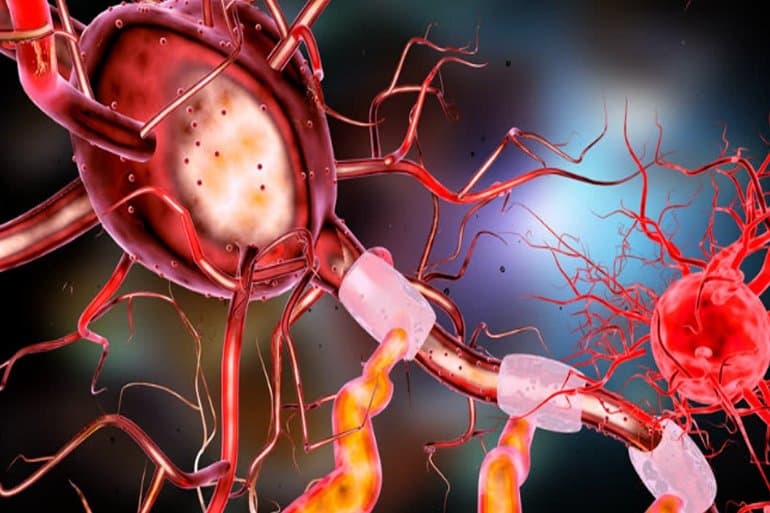[ad_1]
Summary: Findings might advance the event of deep studying networks based mostly on actual neurons that may allow them to carry out extra advanced and extra environment friendly studying processes.
Source: Hebrew University of Jerusalem
We are within the midst of a scientific and technological revolution. The computer systems of at present use synthetic intelligence to study from instance and to execute refined capabilities that, till lately, had been thought not possible. These good algorithms can acknowledge faces and even drive autonomous autos.
Deep studying networks, that are liable for many of those technological advances, are based mostly on the identical rules that kind the construction of our mind: they’re composed of synthetic nerve cells which can be related to 1 one other via synthetic synapses; these cells ship alerts to 1 one other through these synapses.
Our primary understanding of neural operate dates again to the 1950’s. Based on this elementary understanding, present-day synthetic neurons which can be utilized in deep studying function by summing their synaptic inputs linearly and producing in response considered one of two output states—”0″ (OFF) and “1” (ON).
In current a long time, nevertheless, the sphere of neuroscience has found that particular person neurons are, constructed from advanced branching system that comprises many practical sub-regions. Indeed, the branching construction of neurons and the various synapses that contact it over its distributed floor space implies that single neurons may behave as an in depth community whereby every sub-region its personal native, that’s, nonlinear input-output operate.
New analysis on the Hebrew University of Jerusalem (HU) seeks to know the computing energy of a neuron in a scientific method. If one maps the input-output of a neuron for a lot of synaptic inputs (many examples), then one might be able to study how “deep” an identical community ought to be in an effort to replicate the I/O traits of the neuron.
Ph.D. pupil, David Beniaguev, together with Professors Michael London and Idan Segev, at HU’s Edmond and Lily Safra Center for Brain Science (ELSC) have undertaken this problem and have printed their findings in Neuron.
The goal of the examine is to know how particular person nerve cells, the building blocks of the mind, translate synaptic inputs to their electrical output. In doing so, the researchers search to create a brand new form of deep studying synthetic infrastructure, that may act extra just like the human mind and produce equally spectacular capabilities as the mind does. “The new deep learning network that we propose is built from artificial neurons whereby each of them is already 5-7 layers deep. These units are connected, via artificial synapses, to the layers above and below it,” Segev defined.
In the present state of deep neuronal networks, each synthetic neuron responds to enter information (synapses) with a “0” or a “1”, based mostly on the synaptic strength it receives from the earlier layer. Based on that strength, the synapse both sends (excites) —or withholds (inhibits) —a sign to neurons within the subsequent layer.
The neurons within the second layer then course of the information that they obtained and switch the output to the cells within the subsequent degree and so on. For instance, in a community that’s supposed to answer cats (however to not different animals), this community ought to reply for a cat with a “1” on the final (deepest) output neuron, and with a “0” in any other case. Present-state deep neuronal networks demonstrated that they’ll study this job and carry out it extraordinarily effectively.
This method permits computer systems in driverless vehicles, for instance, to study after they have arrived at a visitors gentle or at a pedestrian crossing—even when the pc has by no means earlier than seen that particular crosswalk.
“Despite the remarkable successes that are defined as a ‘game changer’ for our world, we still don’t completely appreciate how deep learning is capable of doing what it does and many people across the world are trying to figure it out,” Segev shared .
The capability of every deep-learning community can be restricted to the particular job that it’s being asked to carry out. A system that was taught to establish cats isn’t capable of establish canines. Furthermore, a devoted system must be in place to detect the connection between meow and cats. While the success of deep studying is superb for particular duties, these techniques lag far behind the human mind of their capability to multi-task.
“We don’t need more than one driverless car accident to realize the inherent dangers in these limitations,” Segev quipped.
Currently, vital analysis is being centered on offering synthetic deep studying with extra clever and all-encompassing talents, such as the flexibility to course of and correlate between completely different stimuli and to narrate to completely different features of the cat (sight, listening to, contact, and so on.) and to learn to translate these numerous features into that means. These are capabilities at which the human mind excels and people which deep studying has not but been capable of obtain.
“Our approach is to use deep learning capabilities to create a computerized model that best replicates the I/O properties of individual neurons in the brain,” Beniaguev defined. To accomplish that, the researchers relied on mathematic modeling of single neurons, a set of differential equations that was developed by Segev and London.

This permits them to precisely simulate the detailed electrical processes taking locations in several areas of the simulated neuron and to greatest map the advanced transformation for the barrage of synaptic inputs and {the electrical} present that they produce via the tree-like construction (dendritic tree) of the nerve cell. The researchers used this mannequin to hunt for a deep neural community (DNN) that replicated the I/O of the simulated neuron. They discovered that this job is achieved by a DNN of 5-7 layers deep.
The staff hopes that building deep-learning networks based mostly carefully on actual neurons which, as they’ve proven, are already fairly deep on their very own, will allow them to carry out extra advanced and extra environment friendly studying processes, that are extra just like the human mind. “An illustration of this would be for the artificial network to recognize a cat with fewer examples and to perform functions like internalizing language meaning. However, these are processes that we still have to prove possible by our suggested DNNs with continued research,” Segev harassed.
Such a system wouldn’t simply imply altering the illustration of single neurons within the respective synthetic neuronal community but in addition mix within the synthetic community the traits of various neuron sorts, as is the case within the human mind. “The end goal would be to create a computerized replica that mimics the functionality, ability and diversity of the brain—to create, in every way, true artificial intelligence,” Segev mentioned.
See additionally

This examine additionally supplied the primary probability to map and examine the processing energy of the various kinds of neurons. “For example, in order to simulate neuron A, we need to map seven different levels of deep learning from specific neurons, while neuron B may need nine such layers,” Segev mentioned. “In this way, we can quantitatively compare the processing power of the nerve cell of a mouse with a comparable cell in a human brain, or between two different types of neurons in the human brain.”
On an much more primary degree, the event of a pc mannequin based mostly on a machine studying method that so precisely simulates mind operate is probably going to supply new understanding of the mind itself. “Our brain developed methods to build artificial networks that replicate its own learning capabilities and this in return allows us to better understand the brain and ourselves,” Beniaguev mentioned.
About this deep studying analysis information
Author: Tali Aronsky
Source: Hebrew University of Jerusalem
Contact: Tali Aronsky – Hebrew University of Jerusalem
Image: The picture is within the public area
Original Research: Closed entry.
“Single cortical neurons as deep artificial neural networks” by David Beniaguev et al. Neuron
Abstract
Single cortical neurons as deep synthetic neural networks
Highlights
- Cortical neurons are effectively approximated by a deep neural community (DNN) with 5–8 layers
- DNN’s depth arises from the interplay between NMDA receptors and dendritic morphology
- Dendritic branches could be conceptualized as a set of spatiotemporal sample detectors
- We present a unified methodology to evaluate the computational complexity of any neuron kind
Summary
Utilizing current advances in machine studying, we introduce a scientific method to characterize neurons’ enter/output (I/O) mapping complexity. Deep neural networks (DNNs) had been educated to faithfully replicate the I/O operate of varied biophysical fashions of cortical neurons at millisecond (spiking) decision. A temporally convolutional DNN with 5 to eight layers was required to seize the I/O mapping of a sensible mannequin of a layer 5 cortical pyramidal cell (L5PC).
This DNN generalized effectively when offered with inputs extensively outdoors the training distribution. When NMDA receptors had been eliminated, a a lot less complicated community (totally related neural community with one hidden layer) was enough to suit the mannequin. Analysis of the DNNs’ weight matrices revealed that synaptic integration in dendritic branches may very well be conceptualized as sample matching from a set of spatiotemporal templates.
This examine gives a unified characterization of the computational complexity of single neurons and means that cortical networks due to this fact have a novel structure, probably supporting their computational energy.
[ad_2]